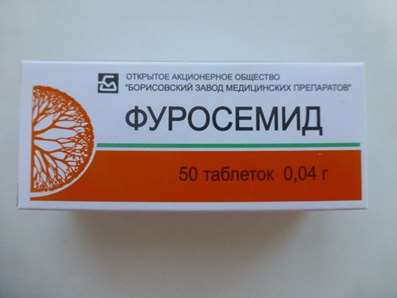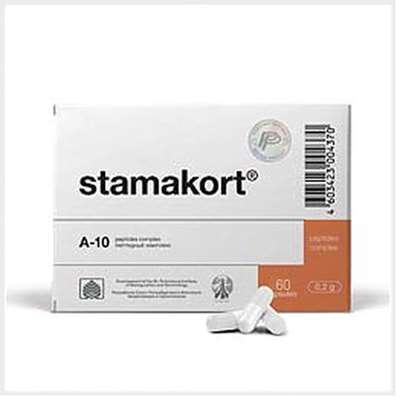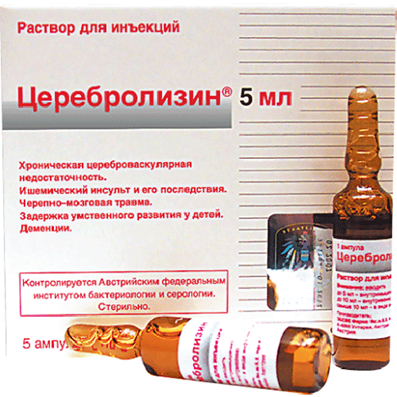Instruction for use: Pedea
I want this, give me price
Active substance Ibuprofen
ATX code M01AE01 Ibuprofen
Pharmacological group
Non-steroidal anti-inflammatory drug (NSAID) [NSAIDs - Propionic acid derivatives]
Nosological classification (ICD-10)
Q25.0 Open ductus arteriosus
An open arterial duct in a premature baby
Q25.1 Coarctation of the aorta
Non-infection of Botallov duct
Composition
Intravenous solution 2 ml
active substance:
ibuprofen 10 mg
excipients: trometamol; sodium chloride; sodium hydroxide; hydrochloric acid 25%; water for injections
Description of dosage form
Transparent, colorless or slightly yellowish solution.
pharmachologic effect
Pharmacological action - anti-inflammatory, antipyretic, analgesic.
Pharmacodynamics
Ibuprofen has anti-inflammatory, analgesic and antipyretic activity. Ibuprofen is a racemic mixture of S (+) - and R (-) - enantiomers. In vivo and in vitro studies indicate that the clinical activity of ibuprofen is related to the S (+) enantiomer. Ibuprofen is a non-selective COX inhibitor that causes a decrease in GH synthesis.
Since GHGs delay the closure of the arterial duct after birth, it is believed that COX suppression is the main mechanism of action of ibuprofen when used for this indication.
Pharmacokinetics
Cmax in plasma after the appointment of the first and last maintenance dose is about 35-40 mg / l, regardless of the gestational and postnatal age of children. At 24 hours after the last dose of 5 mg / kg, the remaining concentrations are about 10-15 mg / l.
The concentrations of the S-enantiomer in plasma are significantly higher than the concentrations of the R-enantiomer, which reflects a rapid chiral inversion of the R-form into the S-form in a ratio similar to that observed in adults (approximately 60%). The apparent volume of distribution is on the average 200 ml / kg (62-350 ml / kg, according to different studies). The central volume of distribution may depend on the status of the duct and decrease as the duct closes.
The rate of ibuprofen elimination in newborns is significantly lower than in adults and older children. T1 / 2 is about 30 hours (16-43 hours). As the gestational age increases, at least at the age of 24-28 weeks, the clearance of both enantiomers increases. The majority of ibuprofen, like other NSAIDs, is associated with plasma albumin, although in neonatal plasma this binding is significantly less (95%) than in adult plasma (99%). In the newborn serum, ibuprofen competes with bilirubin for binding to albumin, so that at a high concentration of ibuprofen, the free fraction of bilirubin may increase.
In preterm infants, ibuprofen significantly reduces the concentrations of PG and their metabolites in plasma, especially PGE2 and 6-keto-PGF1-alpha. In neonates who received 3 doses of ibuprofen, low concentrations of PG remained for up to 72 hours, whereas 72 hours after the administration of only 1 dose of ibuprofen, a repeated increase in the concentration of PG was observed.
Indications
Treatment of a hemodynamically significant open arterial duct in premature newborns with a gestational age of less than 34 weeks.
Contraindications
hypersensitivity to ibuprofen or any auxiliary substance of the drug;
life-threatening infection;
clinically pronounced bleeding, especially intracranial or gastrointestinal;
thrombocytopenia or blood clotting disorder;
significant impairment of kidney function;
congenital heart disease in which the open arterial duct is a necessary condition for satisfactory pulmonary or systemic blood flow (eg pulmonary atresia, severe tetralogy of Fallot, severe coarctation of the aorta);
diagnosed or suspected necrotizing enterocolitis.
With caution - with the suspicion of infectious diseases.
pregnancy and lactation
It is intended for use only in newborns.
Side effects
On the part of the blood system: violations of blood clotting leading to bleeding, such as intestinal and intracranial hemorrhages, respiratory disorders and pulmonary hemorrhages.
On the part of the digestive system: obstruction and perforation of the intestine.
On the part of the kidneys: a decrease in the volume of urine formed, the presence of blood in the urine. Currently, there are data on approximately 1,000 preterm infants found in the literature on ibuprofen and obtained in clinical studies of Podeaź. The causes of adverse events observed in preterm infants are difficult to estimate, they can be related both to the hemodynamic consequences of the open arterial duct, and to the direct effects of ibuprofen.
The adverse events described below, classified by organ systems and by frequency, are listed below. The frequency of the events was determined as follows: very often (> 1/10), often (> 1/100, <1/10), rarely (> 1/1000, <1/100).
From the blood and lymphatic system: very often - thrombocytopenia, neutropenia.
From the nervous system: often - intraventricular hemorrhage, periventricular leukomalacia.
From the respiratory system, chest and mediastinum: very often bronchopulmonary dysplasia; often - pulmonary hemorrhage; rarely - hypoxemia (occurred within 1 h after the first infusion with normalization of the state within 30 min after inhalation with nitrogen oxide).
From the side of the kidneys and urinary tract: often - oliguria, fluid retention, hematuria; rarely acute renal failure.
Gastrointestinal disorders: often - necrotizing enterocolitis, perforation of the intestine; rarely - gastrointestinal bleeding.
Deviations from the norm of laboratory data: very often - an increase in the concentration of creatinine in the blood, a decrease in the concentration of sodium in the blood.
Interaction
Ibuprofen, like other NSVCs, can interact with the following drugs:
- Diuretics: ibuprofen may reduce the effects of diuretics; in patients with dehydration, diuretics may increase the risk of NSAID nephrotoxicity;
- anticoagulants: ibuprofen may enhance the effect of anticoagulants and increase the risk of bleeding;
- SCS: ibuprofen may increase the risk of gastrointestinal bleeding;
- Nitric oxide: since both drugs suppress the function of platelets, their combination theoretically increases the risk of bleeding;
- other NSAIDs: simultaneous use of two or more NSAIDs should be avoided due to an increased risk of adverse reactions;
- aminoglycosides: since ibuprofen may reduce the clearance of aminoglycosides, simultaneous administration of these drugs may increase the risk of nephrotoxicity and ototoxicity.
Incompatibility
This drug should not be mixed with other drugs.
A solution of Podeaź should not come into contact with acidic solutions, for example solutions of certain antibiotics or diuretics. Between infusions of different drugs it is necessary to wash the infusion system.
It is forbidden to use chlorhexidine to disinfect the neck of the ampoule, since PediaAź solution is incompatible with this compound. To disinfect the ampoule, 60% ethyl alcohol is recommended before use. After disinfecting the ampoule necks with an antiseptic, the ampoule should be completely dried and only then opened to exclude the interaction of the antiseptic with the Podeaź solution.
This drug should not be mixed with other medicines, except 0.9% (9 mg / ml) of sodium chloride solution for injection or 5% (50 mg / ml) of glucose solution.
To prevent significant changes in pH caused by the presence of acidic drugs that could remain in the infusion system, before and after the appointment of Podeaź, it is necessary to wash the infusion system with 1.5-2 ml of a 0.9% (9 mg / ml) solution of sodium chloride or 5% (50 mg / ml) of the glucose solution for injection.
Dosing and Administration
In / in (intravenously).
Treatment with Podeaź should only be performed in the neonatal intensive care unit under the supervision of an experienced neonatologist. The course of treatment - 3 doses with an interval of 24 hours.
The dose of ibuprofen is selected depending on the body weight:
- 1st injection - 10 mg / kg;
- 2nd and 3rd injections - 5 mg / kg.
The preparation of Podeaź is administered in the form of a short 15-minute infusion, preferably undiluted. If necessary, the volume can be adjusted with a solution of sodium chloride 9 mg / ml (0.9%) for injection or a solution of glucose 50 mg / ml (5%) for injection. The remaining unused solution should be discarded.
When determining the total volume of the solution administered, the total daily volume of the prescribed liquid should be taken into account.
If after the 1 st or 2 nd dose the child develops anuria or an obvious oliguria, the next dose is prescribed only after the restoration of a normal diuresis. If the arterial duct remains open 24 hours after the last injection or is reopened, a second course consisting of 3 doses as described above may be assigned.
If the condition does not change after the second course of treatment, surgical treatment of the open arterial duct may be required.
Overdose
There is no known case of an overdose associated with intravenous administration of ibuprofen to premature newborns.
However, an overdose is described in children who received ibuprofen for oral administration.
Symptoms: CNS depression, seizures, gastrointestinal disorders, bradycardia, hypotension, dyspnea, impaired renal function and hematuria. Cases of massive overdose (after taking doses more than 1000 mg / kg), accompanied by coma, metabolic acidosis and passing renal failure are described. One case of overdose with a lethal outcome was registered: after taking a dose of 469 mg / kg in a 16-month-old child due to respiratory arrest, development of convulsive syndrome and subsequent aspiration pneumonia.
Treatment: symptomatic therapy. After the standard treatment all patients recovered.
special instructions
The Podeaź preparation should be administered with great care to avoid extravasation followed by possible irritation of the tissues. Since ibuprofen can inhibit platelet aggregation, premature newborns need close monitoring aimed at detecting signs of bleeding.
Since ibuprofen can reduce the clearance of aminoglycosides, with the simultaneous administration of aminoglycosides and ibuprofen, it is recommended that the concentrations of these compounds in the serum be monitored continuously.
Since it has been shown that in vitro ibuprofen competitively displaces bilirubin from the binding site with albumin, premature neonates may increase the risk of bilirubin encephalopathy. In this regard, ibuprofen should not be prescribed to newborns with severe unconjugated hyperbilirubinemia. It is recommended to closely monitor the function of the kidneys and the gastrointestinal tract.
Prior to the appointment of the Podeaź preparation, an appropriate echocardiographic examination should be performed to confirm the hemodynamically significant open arterial duct and exclude pulmonary hypertension and other congenital heart defects with concomitant nephrosis of the arterial duct. It is shown that in treatment of the recommended scheme of premature newborns with gestational age less than 27 weeks, the frequency of closure of the arterial duct is low.
Since the prophylactic use of Podeaź in the first three days of life (beginning in the first 6 hours of life) of premature newborns with a gestational age of less than 28 weeks was accompanied by an increase in the incidence of adverse events from the lungs and kidneys, Podeaź should not be used for preventive purposes.
Being an NSAID, ibuprofen can mask the symptoms of infectious diseases.
Influence on the ability to drive and complex machinery. Not applicable. It is intended for use only in newborns.
Form of issue
Solution for intravenous administration, 5 mg / ml: in ampoules of colorless hydrolytic glass type I, with broken fracture points and marking strips, 2 ml each; in detachable containers of expanded polymer of 4 amp; in a pack of cardboard 1 container.
Conditions of leave from pharmacies
For hospitals.
storage Conditions
At a temperature of no higher than 25 ° C.
Keep out of the reach of children.
Shelf life
4 years.
Do not use after the expiry date printed on the package.

 Cart
Cart





